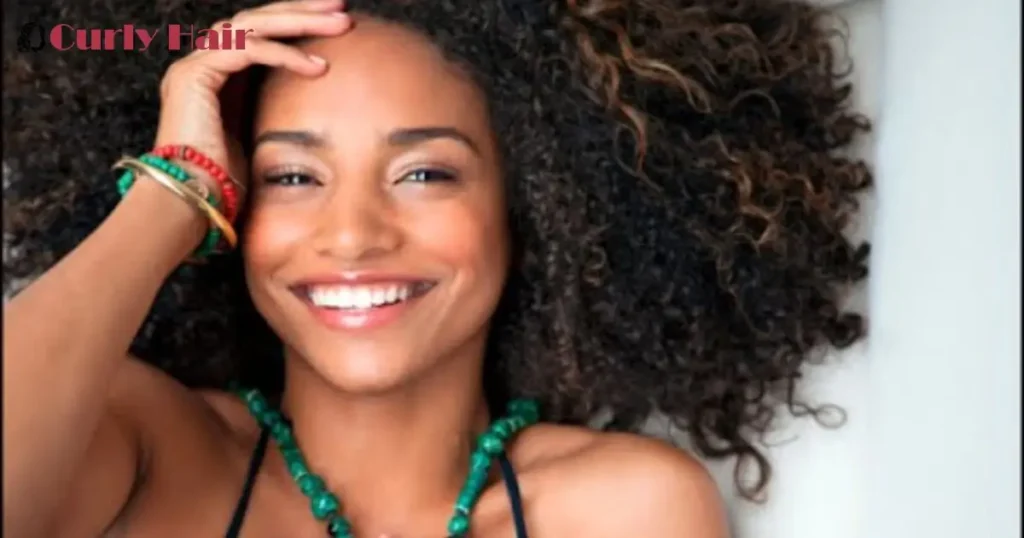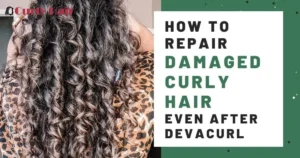When it comes to hair types, curly hair has always stood out for its unique texture, bounce, and versatility. But one question often sparks curiosity among both curly-haired individuals and those without curls:Is curly hair rare? The answer might surprise you. While curls may seem uncommon in certain regions or cultures, they are more widespread than many people think.
Let’s explore the science, genetics, and global distribution behind curly hair and uncover whether it’s truly rare or just less visible.
Understanding Hair Types and Textures
To determine if curly hair is rare, we first need to understand the different hair types. Hair is usually classified into four main types:
- Type 1: Straight
- Type 2: Wavy
- Type 3: Curly
- Type 4: Coily or kinky
These categories are further broken down into subtypes like 2A, 3B, or 4C, based on curl pattern and hair thickness. Curly hair generally falls into Type 3 and Type 4, with more defined spirals or tight coils.
Curly hair can appear voluminous, frizzy, or shiny depending on how it’s cared for and the porosity of the strands. Additionally, many people struggle with curly hair volume or curly thick hair, which can be tricky to manage without the right products or techniques.
What Science Says About Curly Hair Rarity?
Genetics plays a major role in determining whether someone will have curly, wavy, or straight hair. The trichohyalin gene (TCHH) and the keratin gene (KRT71) influence follicle shape. Round follicles produce straight hair, while oval or kidney-shaped follicles produce waves and curls.
According to research:
- 45% of people globally have straight hair.
- 40% have wavy hair.
- 15% have curly or coily hair.
This suggests that curly hair is less common, but not extremely rare. What makes curly hair seem more uncommon is often cultural visibility and how curls are styled or altered to fit beauty standards.
Curly Hair Across Different Ethnicities

The rarity of curly hair can vary dramatically by ethnicity and geography:
African Descent
People of African heritage tend to have Type 4 curls, which are tight, dense, and shrink when dry. This curl pattern is actually very common in regions like sub-Saharan Africa, the Caribbean, and parts of the Americas.
European Descent
In Europe and North America, Type 2 and Type 3 curls are less frequent. Many people of European descent have straight or wavy hair, which may lead to the belief that curls are rare.
Asian Descent
Most people of East Asian descent have Type 1 straight hair, which is often thick and smooth. Curly hair is very uncommon in this group, except when due to mixed heritage or genetic variation.
Latinx and Mixed Descent
Curly hair is very common among Latinx individuals, especially those with African, Indigenous, or Mediterranean ancestry. The curly hair growth patterns in these populations are quite diverse and often have more volume and definition.So, curly hair may seem rare in some cultures but is quite common in others it’s all about perspective.
Why Does Curly Hair Might Feel Rare?
Even in populations where curls are genetically present, cultural and historical factors influence their visibility:
Heat Styling and Chemical Straightening
Many people with curly hair have spent years straightening their curls to meet mainstream beauty norms. As a result, curls are less visible in daily life.
Lack of Representation
In movies, magazines, and advertising, curly hair has often been underrepresented, especially tighter textures like 4A to 4C. This underexposure leads people to believe curls are rare.
Product and Salon Accessibility
In areas where curly hair is a minority, it can be hard to find stylists and products suited for coils, which can lead to curls being mismanaged or hidden.
Curly Hair in Childhood

Children often have looser curls that change with age. Some people lose their curl pattern due to hormonal shifts, damage, or heat styling, leading them to think their curls “disappeared.”
The Rise of the Curly Hair Movement
The last decade has seen a surge in the natural hair movement, with more people embracing their curls than ever before. Social media platforms like Instagram, YouTube, and TikTok are filled with curly hair tutorials, natural hair transformations, and product reviews. This cultural shift has made it easier for people to learn how to care for curly hair, from high porosity hair routines to frizz control tips.
Brands have also expanded their lines to include curly hair products, like leave-in conditioners, curl creams, serums, and scalp treatments. This has empowered people to proudly show their natural textures.
Additionally, the growing desire for shiny curly hair has led to the development of products specifically designed to hydrate and lock in moisture, helping to maintain healthy, radiant curls.
How to Care for Curly Hair Properly?
Whether your curls are loose and bouncy or tight and coily, proper care can help you celebrate your unique hair type. Here’s how to keep curly hair healthy and defined:
Use a Sulfate-Free Shampoo
Sulfates strip natural oils, leading to dryness and frizz, which can affect curly hair volume and texture.
Deep Condition Regularly
Use deep conditioners or hot oil treatments weekly to hydrate and maintain curly hair growth and thickness.
Apply Curl Cream or Leave-In
These help with moisture retention and curl definition.
Use a Wide-Tooth Comb or Fingers
Never brush curly hair dry; it causes breakage and destroys the pattern, leading to frizz.
Sleep on Satin or Silk
Cotton pillowcases cause friction and frizz. Use a satin bonnet or pillowcase to protect your curls while you sleep.
The Truth: Is Curly Hair Rare?
So, back to our original question: Is curly hair rare? Technically, yes globally speaking, straight and wavy hair are more common. But curly hair isn’t exceptionally rare. It shows up in millions of people across different backgrounds and cultures.
What really makes curly hair feel rare is a mix of societal beauty norms, under representation, and lack of education on how to care for it.In reality, curly hair is unique, beautiful, and more common than you think.
Conclusion
While the question “Is curly hair rare?” continues to be asked, the answer is layered. Curly hair is less common, but not scarce. With the growing visibility of natural textures and improved hair care education, curls are finally getting the spotlight they deserve.
Whether you’re rocking loose waves or tight coils, know that your hair is part of a global tapestry of diversity and it’s anything but rare in beauty.
Frequently Asked Questions
Is curly hair genetic or random?
Curly hair is primarily genetic. It’s inherited from one or both parents. Your curl pattern can evolve with age or hormones.
Can two straight-haired parents have a curly-haired child?
Yes, if both carry the curly hair gene. It can skip generations and appear unexpectedly. This is common in mixed ancestry families.
Why does curly hair seem uncommon in some areas?
Cultural styling practices often hide curls. Straightening, braiding, or relaxing changes visibility. Representation also plays a major role.
Does curly hair require more care than straight hair?
Yes, because it’s drier and prone to tangles. Curly hair needs more moisture and gentle handling. Protective styling helps maintain health.
Is curly hair more common in certain races?
Yes, especially in African and Latinx communities. It varies by region, genetics, and cultural mixing. Globally, it’s less common but not rare.
Can hair become curly later in life?
Yes, due to hormonal changes or damage. Some experience curlier hair after puberty or pregnancy. However, not everyone will develop curls naturally.
What’s the rarest hair type?
Red curly hair is the rarest combo. Only 1–2% of the world has red hair. When paired with curls, it’s even more unique.











